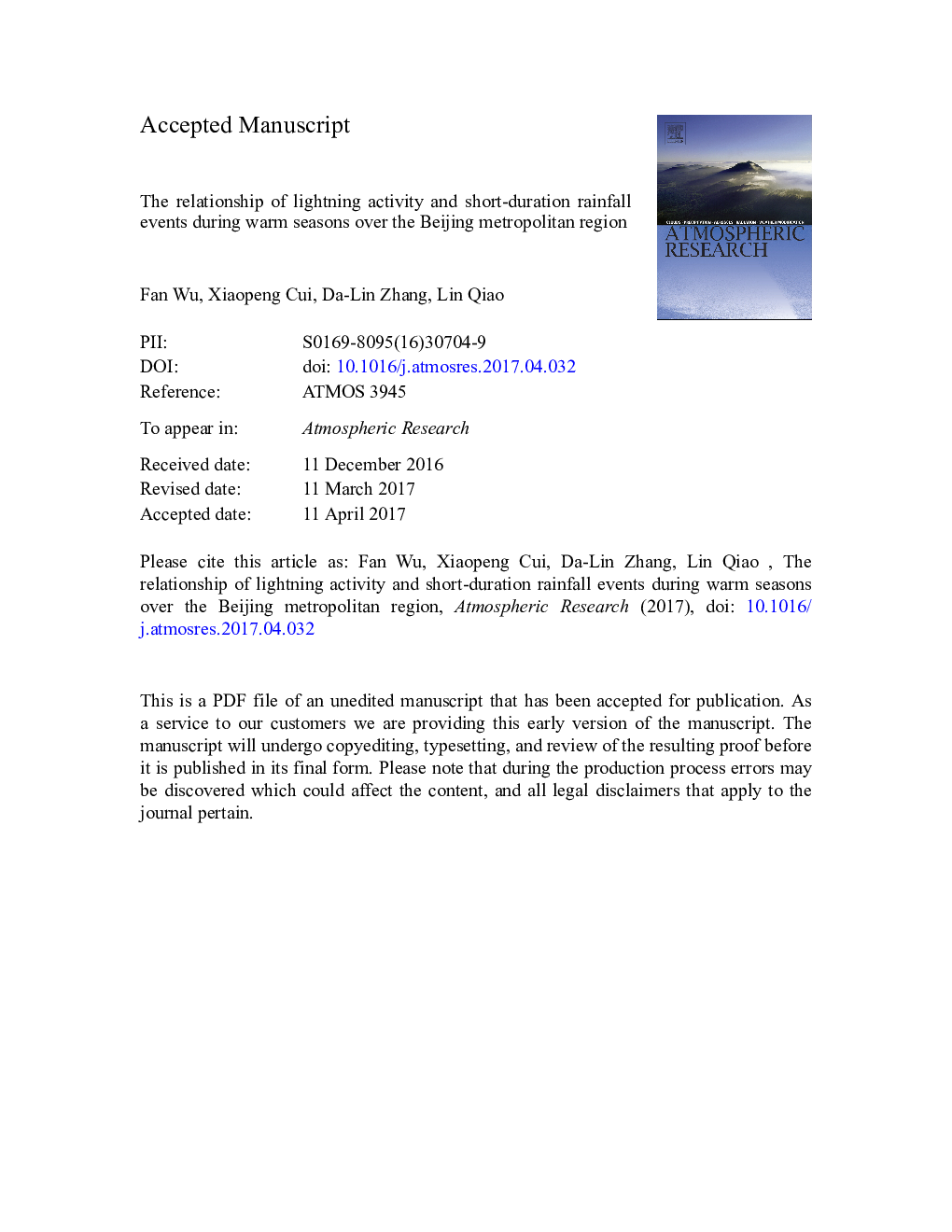| Article ID | Journal | Published Year | Pages | File Type |
|---|---|---|---|---|
| 5753770 | Atmospheric Research | 2017 | 50 Pages |
Abstract
The relationship between lightning activity and rainfall associated with 2925 short-duration rainfall (SDR) events over the Beijing metropolitan region (BMR) is examined during the warm seasons of 2006-2007, using the cloud-to-ground (CG) and intracloud (IC) lightning data from Surveillance et Alerte Foudre par Interférometrie Radioélectrique (SAFIR)-3000 and 5-min rainfall data from automatic weather stations (AWSs). An optimal radius of 10 km around selected AWSs is used to determine the lightning-rainfall relationship. The lightning-rainfall correlations vary significantly, depending upon the intensity of SDR events. That is, correlation coefficient (R ~ 0.7) for the short-duration heavy rainfall (SDHR, i.e., â¥Â 20 mm hâ 1) events is found higher than that (R ~ 0.4) for the weak SDR (i.e., 5-10 mm hâ 1) events, and lower percentage of the SDHR events (< 10%) than the weak SDR events (40-50%) are observed with few flashes. Significant time-lagged correlations between lightning and rainfall are also found. About 80% of the SDR events could reach their highest correlation coefficients when the associated lightning flashes shift at time lags of < 25 min before and after rainfall begins. Those events with lightning preceding rainfall account for 50-60% of the total SDR events. Better lightning-rainfall correlations can be attained when time lags are incorporated, with the use of total (CG and IC) lightning data. These results appear to have important implications for improving the nowcast of SDHR events.
Keywords
Related Topics
Physical Sciences and Engineering
Earth and Planetary Sciences
Atmospheric Science
Authors
Fan Wu, Xiaopeng Cui, Da-Lin Zhang, Lin Qiao,
